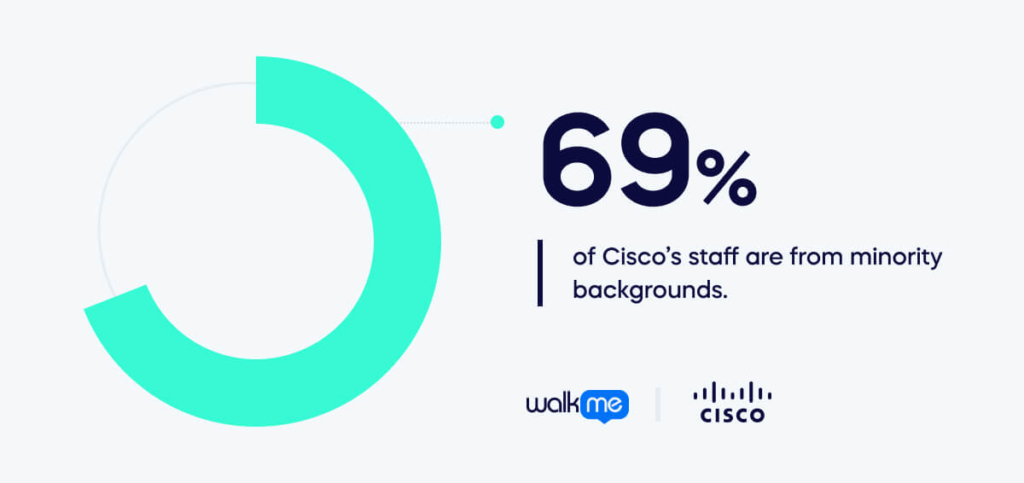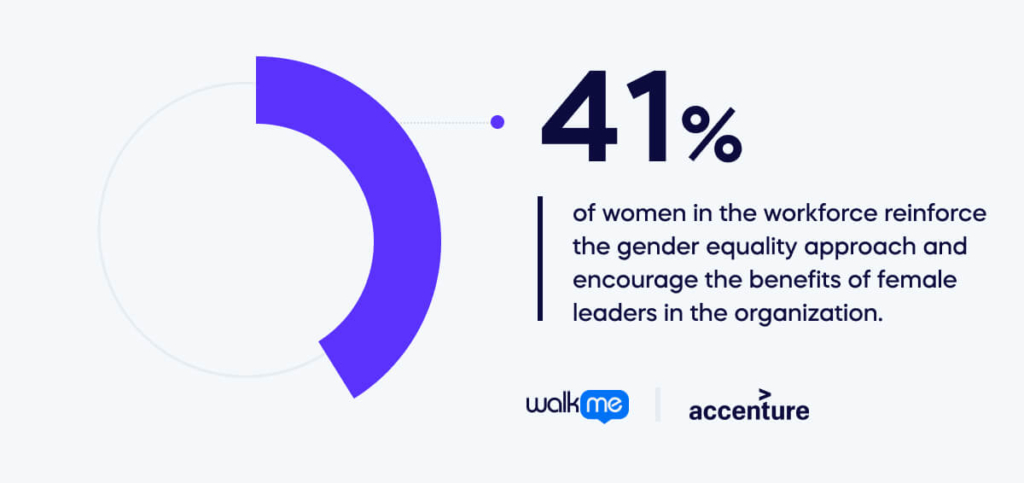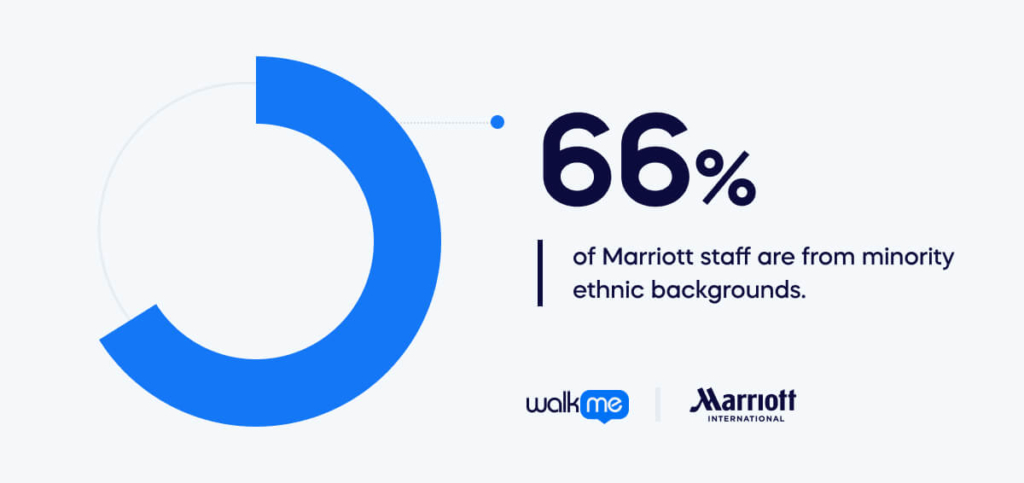Let’s be honest. Due to the culture shifts resulting from the covid pandemic of 2019 and the mass tech industry layoffs in 2022-23, most job seekers are constantly aware of the precarious nature of their role when they begin a new position.
Add to this equation the many Gen Z job seekers are looking to begin their careers, and it becomes essential to see any culture change in 2023 concerning the needs of Gen Z-ers.
Doing so may represent the difference between providing a poor or outstanding employee experience and a poor one, dramatically affecting employee retention rates.
The young people today are mostly part of Gen Z (those born between the mid-90s and early 2010s, now aged 18-26 when looking for work). They are driving the market for attracting and retaining talent and influencing culture change for the best Fortune 500 companies to work for in 2023.
To help you see how Fortune 500 companies practice culture change in 2023, we will cover the following topics in this article:
- Why is Gen Z essential to culture change in 2023?
- Who is responsible for culture change?
- The 6 steps to the best Fortune 500 culture changes to attract Gen Z
- Examples of healthy culture from 3 of the top 10 Fortune 500 Companies
Let’s begin by exploring why it’s essential to have culture change in 2023.
What is culture change?
Culture change refers to the process of fundamentally shifting the traditional way of doing things, beliefs, values, and attitudes within an organization or societal group. This could involve changes in behaviors, processes, procedures, or even the overall mindset of the group.
Culture change is often necessary for an organization to adapt to new market conditions, technologies, or strategies. It’s typically a complex and challenging process that requires strong leadership, clear communication, and active participation from all members of the organization.
The process might include reassessing values, implementing new norms and behaviors, or changing the communication style within the organization. The goal is to create a culture that better aligns with the organization’s strategic objectives or societal norms.
It’s important to note that culture change is a long-term process that requires significant effort and commitment. It’s not a one-time event but rather an ongoing process of continual improvement and adaptation. It is a fundamental aspect of development and change management.
Why is Gen Z essential to culture change in 2023?
If you’re wondering why culture change is essential in 2023, look to Gen Z employees. Zippia calculated that there would be 2 billion gen z people in the world in 2023, which is a quarter of the global population, meaning it would be wasteful to ignore the needs of this group as they enter the workforce.
This generation expects more from employers, such as workforce diversity, mental health support, and development opportunities. So companies must accept that the only way to deliver on the expectations of staff within these age groups is to change culture constantly.
Forbes shows that Fortune 500 companies already recognize the importance of some of these needs, as 70% have mentoring programs.
Who is responsible for culture change?
It would be easy to assume that digital transformation leaders or members of the C-suite would be responsible for culture change. But in truth, changes in an organization’s culture are the responsibility of every company member.
Because although C-suite staff may do the bulk of the work in building the culture change strategy using change management tools, staff from all layers of the organization and all departments should contribute to an element of planning.
And more significantly, every organization member must be aware of the culture change plan as they are responsible for implementing it daily.
The 6 steps to the best Fortune 500 culture changes to attract Gen Z

Follow these ten steps to culture change to ensure successful cultural change that lasts, with minimal waste and high employee retention.
1. Offer Flexibility For Work-Life Balance
With the arrival of Gen-Z workers, anticipate an increase in global digital innovation. Compared to previous generations, Generation Z is more diverse, entrepreneurial, technologically proficient, and independent.
They prioritize work-life balance and mental well-being, following in the footsteps of Millennials, which sets them apart from Baby Boomers, who did not prioritize these aspects.
Sage found that 81% of 3,500 employees felt flexible working, including remote and hybrid options, was necessary.
2. Understand Their Needs
Gen Z is the first generation to voice their expectations about what they consider essential at work. They want more, which involves giving mental health preference, having the option to work flexible hours, getting extended vacation time, and not compromising.
To prevent high levels of employee turnover, leaders need to communicate transparently, ask for feedback, and act appropriately to meet Gen Z’s requirements, as well as train Gen Z employees to achieve the communication and hard skills needed to maintain and develop their role.
Author and thought leader Simon Sinek describes some of the challenges of understanding and meeting the needs of Gen Z in this short video shown below.
The Challenge with Gen Z | Simon Sinek
Additionally, GWI found that roughly a third of gen z suffer from anxiety, and the top ten Fortune 500 company Wegmans Food Markets, offers unlimited mental healthcare to its employees to retain gen z to retain them by showing that they understand their needs.
3. Provide Development Opportunities
Leaders must realize that Gen-Z employees value their work to expand their knowledge, progress, and diversify their skill set, rather than being committed to a specific role or company.
To meet this need, leaders should offer opportunities that constantly engage and stimulate their younger talent while benefiting from their fresh perspectives in reverse mentoring.
Forbes found that looking toward 2023, 70% of Gen Z felt unprepared for the future of work. As part of your culture change, providing development opportunities as a perk within job descriptions will likely attract and retain Gen Z.
They need to feel confident your organization will offer them the proper employee training for professional development to equip them for the future of work. Doing so will also allow your organization to gain digital resilience.
4. Incorporate Gen-Z’s Desire For Change Into Your Culture
It is helpful for change leaders to accept that Gen-Z is not an unusual group of individuals impossible for anyone to understand.
Instead, they can influence change and become increasingly vocal and influential in the workplace. Organizations that do not recognize and utilize the potential of this generation will be at a disadvantage.
Practicing the following interventions may attract Gen Z as you show you are willing to incorporate their desire for change into your culture:
- Allow video interviews to match Gen Z’s passion for social media and posting online.
- Make pay amounts visible to encourage trust and tie into Gen Z’s place as the most willing generation to say that money and ambition drive their professional decisions.
- Refer to flexibility in work-life balance arrangements, such as remote or hybrid working offers in job descriptions.
5. Make Gen Z Your Teachers
The generation known as Gen-Z is very comfortable with technology because they were born into it. They have a natural ability to interact with information and use technology to connect with others.
They believe the world is accessible to everyone and have many innovative ideas. Leaders must be curious and open to learning from Gen-Z, just as they can learn from current leaders.
Digital transformations are often challenging and costly will low rates of success, but Gen Z employees could change all this. Using a DAP to train Gen Z and their affinity for technology makes them excellent candidates for digital adoption champions for new technologies, increasing adoption rates in your organization.
Statista shows that Gen Z represents nearly 21% of the US population, 68.5 million Americans. Learning how to treat them will dramatically improve hiring and talent acquisition for the upcoming generation.
6. Understand Work As A Part Of Life
As new generations enter the workforce, their perception of work is evolving. Gen Z considers work an integral part of life, and employers must recognize the implications of this mindset.
Doing so includes offering more flexible work arrangements, updated employee benefits, and a greater emphasis on the purpose of work and the company’s impact on society.
Monique Herena, Chief Colleague Experience Officer for top ten Fortune 500 company American Express, said, “More than 40% of our U.S. colleagues have opted to be fully virtual, a percentage that has doubled from levels before the pandemic.”
Meeting these flexible arrangements is a way of retaining Gen Z employees as they see their company and understands work as a part of life.
3 Examples of healthy culture change the top Fortune 500 companies
Let’s focus on exactly what three of the top ten Fortune 500 companies are doing to attract and retain gen z employees, beginning with the number one Fortune 500 company, Cisco.
Cisco Systems

Networking hardware and software manufacturer Cisco is number one top in the list of best Fortune 500 companies to work for in 2023. Part of their efforts to build and maintain a healthy culture comes from diverse skills from employees from different social, ethnic, and economic backgrounds.
Examples of culture change at Cisco include the following:
- 69% of Cisco’s staff are from minority backgrounds.
- There are 646 job openings (March 2023), a relatively low number for such a large company of over 40,000 employees, suggesting a positive culture resulting in high employee retention rates.
- Cisco offers paid leave for staff to do volunteering days, pointing to an awareness of the importance of community outside of the work environment.
Accenture

Indian tech consultancy Accenture is number five on the list of best Fortune 500 companies to work for in 2023. They adopt many practices to ensure their culture remains inclusive, actively promoting many perspectives and benefitting them as they grow as a company constantly engaged in culture change.
Examples of culture change at Accenture include the following:
- 80 days of fully paid maternal leave shows a positive attitude toward the work-life balance.
- 40 days of paternal leave shows equal treatment of men and women, encouraging employee retention.
- 41% of women in the workforce reinforce the gender equality approach and encourage the benefits of female leaders in the organization.
Marriott International

Marriott Internal is one of the largest hospitality providers, with hundreds of hotels and restaurants across the US. Ensuring positive culture change can be challenging for large enterprises like this. Still, Marriott achieved this despite the challenges, making them number ten on the list of best Fortune 500 companies to work for in 2023.
Examples of culture change at Accenture include the following:
- A 54% female workforce (highest tied with Wegmans Food Markets) shows that Marriott cares about gender equality and representation.
- 66% of Marriott staff are from minority ethnic backgrounds. This percentage is the second highest after Cisco, showing that Marriott seeks to build a diverse workforce.
Seeing these examples of what helps enterprises enter the Fortune 500 list of best places to work is helpful. But despite how positive these statistics look, it is essential to note that they don’t convey the human experience of working at these companies.
However, they are optimistic as higher percentages of less historically well-represented backgrounds, such as women and minorities, leading to more diverse, innovative practices and company culture.
Listen to Gen Z to drive your culture change
In conclusion, the impact of Gen Z on Fortune 500 organizations promises to be groundbreaking. Their insights and ideas will lead to revolutionary changes in culture as we move closer to 2023.
They are motivated by creativity, inclusion, participation, awareness, and authenticity. It is up to the leaders of global corporate organizations to understand the needs and preferences of this generation to recognize the potential they can bring to the business world.
Leaders must be forward-thinking and agile in embracing the social media capabilities that Gen Z possesses. With these advantages taken into account, they will enable their organizations to stay relevant in such an ever-evolving–and competitive–business environment. In short, listen and embrace Gen Zers because they are the future of business.

